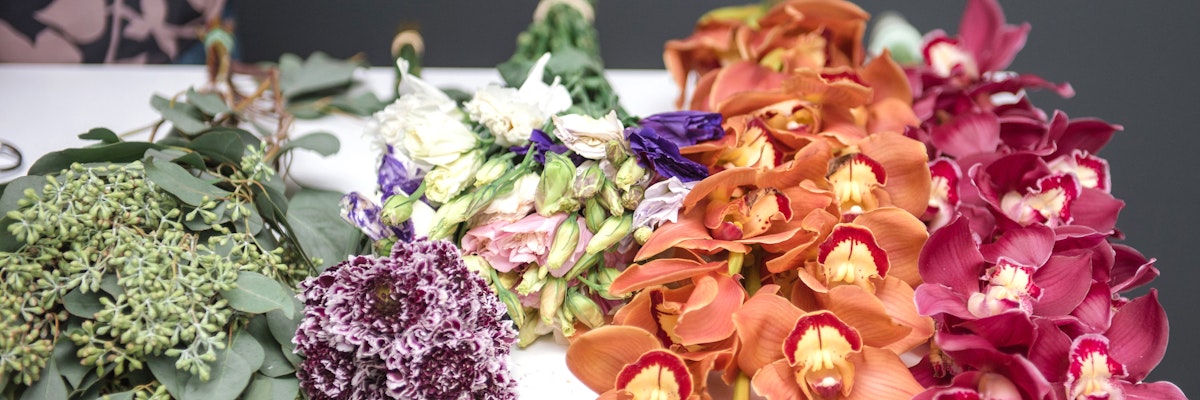Chinese Flowers: Exploring the Significance and Symbolism of Chinese Flowers
In Chinese culture, flowers hold a cherished place, deeply rooted in traditional beliefs, myths, and legends. These vibrant blossoms have not only captivated the senses but also woven themselves into the fabric of daily life.
Chinese Flowers
From auspicious celebrations to personal adornment, Chinese flowers are imbued with profound meaning and symbolism. Let's embark on a journey through time and explore the rich history, cultural significance, and modern usage of Chinese flowers.
Chinese Flowers
From auspicious celebrations to personal adornment, Chinese flowers are imbued with profound meaning and symbolism. Let's embark on a journey through time and explore the rich history, cultural significance, and modern usage of Chinese flowers.
Plum Blossoms - Endurance and Beauty:
The delicate white petals of plum blossoms herald the arrival of spring in China. Revered for their resilience and ability to bloom in harsh conditions, these flowers symbolize endurance, strength, and beauty. Plum blossoms are often depicted in art and poetry, representing perseverance through adversity.
Orchids - Elegance and Refinement:
Regarded as the "Queen of Flowers," orchids hold a special place in Chinese culture, embodying elegance and refinement. With their graceful blooms and intoxicating fragrance, orchids have long been associated with nobility and high status. These exquisite flowers are often displayed during auspicious occasions and signify wealth, luxury, and prosperity.
Chrysanthemums - Longevity and Autumnal Beauty:
Chrysanthemums, known as "ju" in Chinese, are revered for their vibrant colors and intricate petal formations. Symbolizing longevity, autumnal beauty, and nobility, chrysanthemums are widely used in the Mid-Autumn Festival and are considered one of the Four Gentlemen in Chinese art, representing moral integrity.
Plum Blossoms - Endurance and Beauty:
The delicate white petals of plum blossoms herald the arrival of spring in China. Revered for their resilience and ability to bloom in harsh conditions, these flowers symbolize endurance, strength, and beauty. Plum blossoms are often depicted in art and poetry, representing perseverance through adversity.
Orchids - Elegance and Refinement:
Regarded as the "Queen of Flowers," orchids hold a special place in Chinese culture, embodying elegance and refinement. With their graceful blooms and intoxicating fragrance, orchids have long been associated with nobility and high status. These exquisite flowers are often displayed during auspicious occasions and signify wealth, luxury, and prosperity.
Chrysanthemums - Longevity and Autumnal Beauty:
Chrysanthemums, known as "ju" in Chinese, are revered for their vibrant colors and intricate petal formations. Symbolizing longevity, autumnal beauty, and nobility, chrysanthemums are widely used in the Mid-Autumn Festival and are considered one of the Four Gentlemen in Chinese art, representing moral integrity.
Lotus Flowers - Purity and Enlightenment:
The lotus flower holds deep spiritual significance in Chinese culture. Rising from muddy waters into exquisite blooms, lotus flowers represent purity, enlightenment, and spiritual awakening. They are associated with Buddhism and often featured in religious art and architecture, signifying divine grace amidst earthly struggles.
Peonies - Prosperity and Romance:
Peonies, known as "the king of flowers," are cherished for their sumptuous blooms and captivating fragrance. They symbolize prosperity, honor, and romance in Chinese culture. Peonies are often found in traditional Chinese weddings, representing a blissful and prosperous union. They are also believed to bring good fortune and wealth to households.
Narcissus - Good Luck and New Beginnings:
Narcissus, also known as "water fairy" or "shui xian," is renowned for its delicate white petals and enchanting fragrance. This flower symbolizes good luck, prosperity, and new beginnings. During the Chinese New Year, narcissus is prominently displayed to welcome a fresh start and invite positive energy into homes.
Lotus Flowers - Purity and Enlightenment:
The lotus flower holds deep spiritual significance in Chinese culture. Rising from muddy waters into exquisite blooms, lotus flowers represent purity, enlightenment, and spiritual awakening. They are associated with Buddhism and often featured in religious art and architecture, signifying divine grace amidst earthly struggles.
Peonies - Prosperity and Romance:
Peonies, known as "the king of flowers," are cherished for their sumptuous blooms and captivating fragrance. They symbolize prosperity, honor, and romance in Chinese culture. Peonies are often found in traditional Chinese weddings, representing a blissful and prosperous union. They are also believed to bring good fortune and wealth to households.
Narcissus - Good Luck and New Beginnings:
Narcissus, also known as "water fairy" or "shui xian," is renowned for its delicate white petals and enchanting fragrance. This flower symbolizes good luck, prosperity, and new beginnings. During the Chinese New Year, narcissus is prominently displayed to welcome a fresh start and invite positive energy into homes.
Chinese flowers are not merely ornamental; they are woven into the cultural tapestry of symbolism, traditions, and beliefs. Each blossom carries a story, an essence that speaks of endurance, beauty, elegance, purity, prosperity, and luck. From ancient celebrations to modern-day rituals, these flowers continue to hold significance in Chinese society. So, the next time you encounter a plum blossom, orchid, chrysanthemum, lotus flower, peony, or narcissus, take a moment to appreciate the intricate cultural meanings they embody, and let them remind you of the timeless beauty and wisdom of Chinese traditions.
Chinese flowers are not merely ornamental; they are woven into the cultural tapestry of symbolism, traditions, and beliefs. Each blossom carries a story, an essence that speaks of endurance, beauty, elegance, purity, prosperity, and luck. From ancient celebrations to modern-day rituals, these flowers continue to hold significance in Chinese society. So, the next time you encounter a plum blossom, orchid, chrysanthemum, lotus flower, peony, or narcissus, take a moment to appreciate the intricate cultural meanings they embody, and let them remind you of the timeless beauty and wisdom of Chinese traditions.


